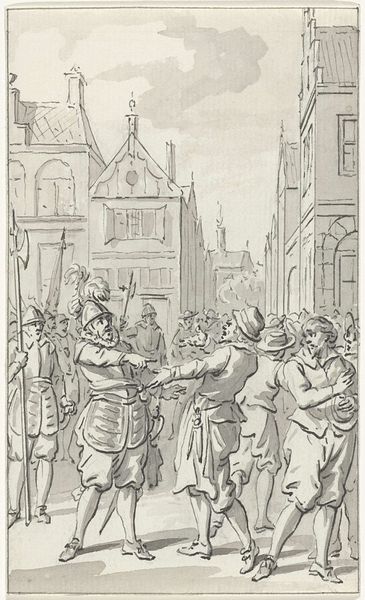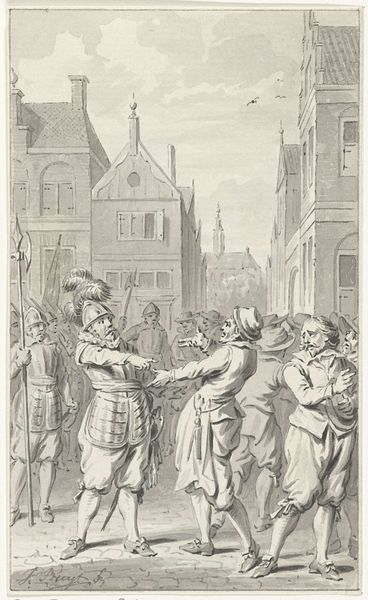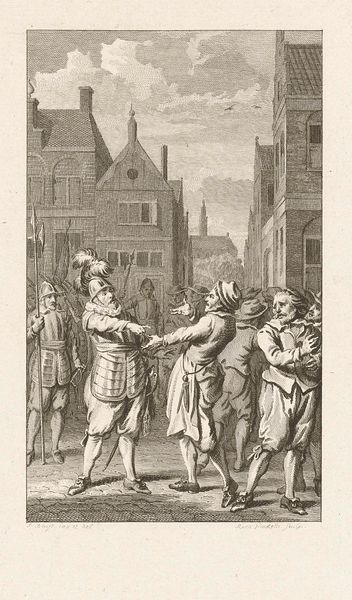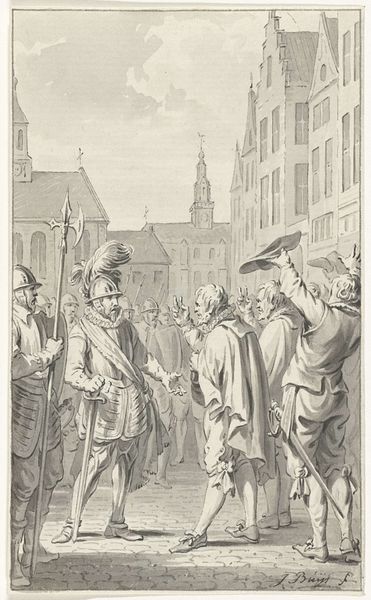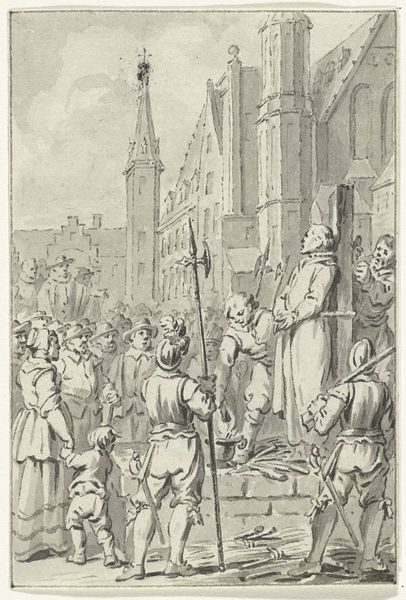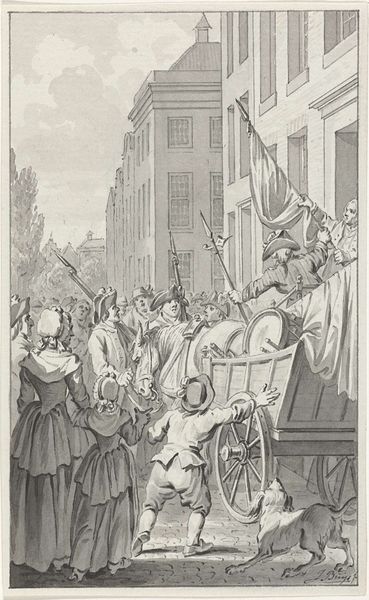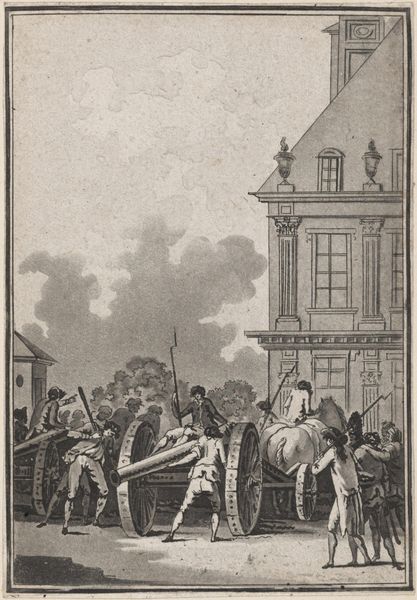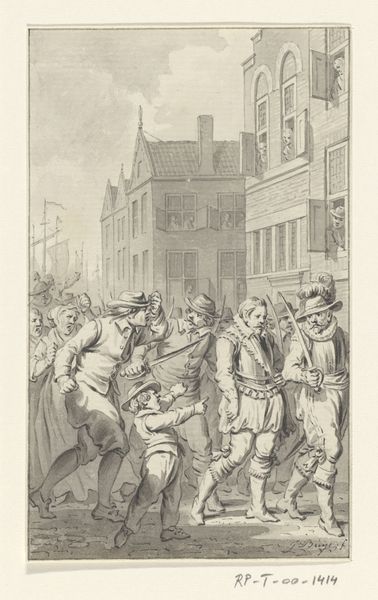
Predikant Johannes Florianus te Brussel als ketter in een zak gebonden en in een put geworpen, 1585 1781 - 1783
0:00
0:00
jacobusbuys
Rijksmuseum
drawing, ink, pen, engraving
#
drawing
#
medieval
#
narrative-art
#
pen illustration
#
ink
#
pen-ink sketch
#
sketchbook drawing
#
pen
#
history-painting
#
engraving
#
realism
Dimensions: height 132 mm, width 89 mm
Copyright: Rijks Museum: Open Domain
Curator: This pen and ink drawing, dating from 1781-1783, is by Jacobus Buys and is currently held at the Rijksmuseum. The artwork depicts Predikant Johannes Florianus te Brussel als ketter in een zak gebonden en in een put geworpen, 1585 which translates as Preacher Johannes Florianus of Brussels bound as a heretic in a sack and thrown into a well, 1585. Editor: The muted tones create a grim atmosphere, and the lines, though delicate, outline a stark and cruel scene. The well itself is the focal point, around which figures cluster with ominous purpose. Curator: Absolutely. Buys situates this event within the fraught religious and political landscape of the 16th century, specifically the persecution of perceived heretics during a period of intense religious conflict. Johannes Florianus’s fate reflects the brutal suppression of dissenting voices. We must not overlook the social power structures at play here; those who wielded religious authority were using it to erase voices that contradicted theirs, creating a society of fear and intolerance. Editor: Observe the meticulous detail with which Buys renders the textures—the rough fabric of the sack, the worn stonework of the well. Note also how the figures are arranged according to their degree of implication in the action. Those actively pushing Florianus towards his fate stand in the foreground, contrasted against onlookers in the back. Curator: And consider who these onlookers are. What roles did they play in a culture of normalized religious violence? These ordinary people watching a brutal event can encourage us to interrogate how we become bystanders to injustice, or even complicit actors, in various subtle and overt ways. The very composition highlights a social dynamic ripe with potential for exploitation and oppression. Editor: I agree, and what is compelling, is Buys’ command over line and form, allowing him to deliver a message with considerable precision. It's clear Buys seeks to represent events as objectively as possible, even though there is inevitably bias in the artistic choices being made here. The penmanship here isn't just reportage; it’s calculated aestheticism, however brutal the subject matter may be. Curator: Indeed. By making this brutal execution the center of the piece, the artwork prompts viewers to critically assess historical narratives, encouraging a deeper awareness of injustice, then and now. Editor: Seeing the piece in the context of other drawings by Buys further accentuates his keen eye for realistic depiction. It showcases his grasp of shadow and light as well as volume. Curator: I think, together, we’ve shed light on the intersections of political repression and artistic expression in this pivotal moment. Editor: Hopefully encouraging further investigations into the formal techniques employed to deliver an explicit story.
Comments
No comments
Be the first to comment and join the conversation on the ultimate creative platform.
